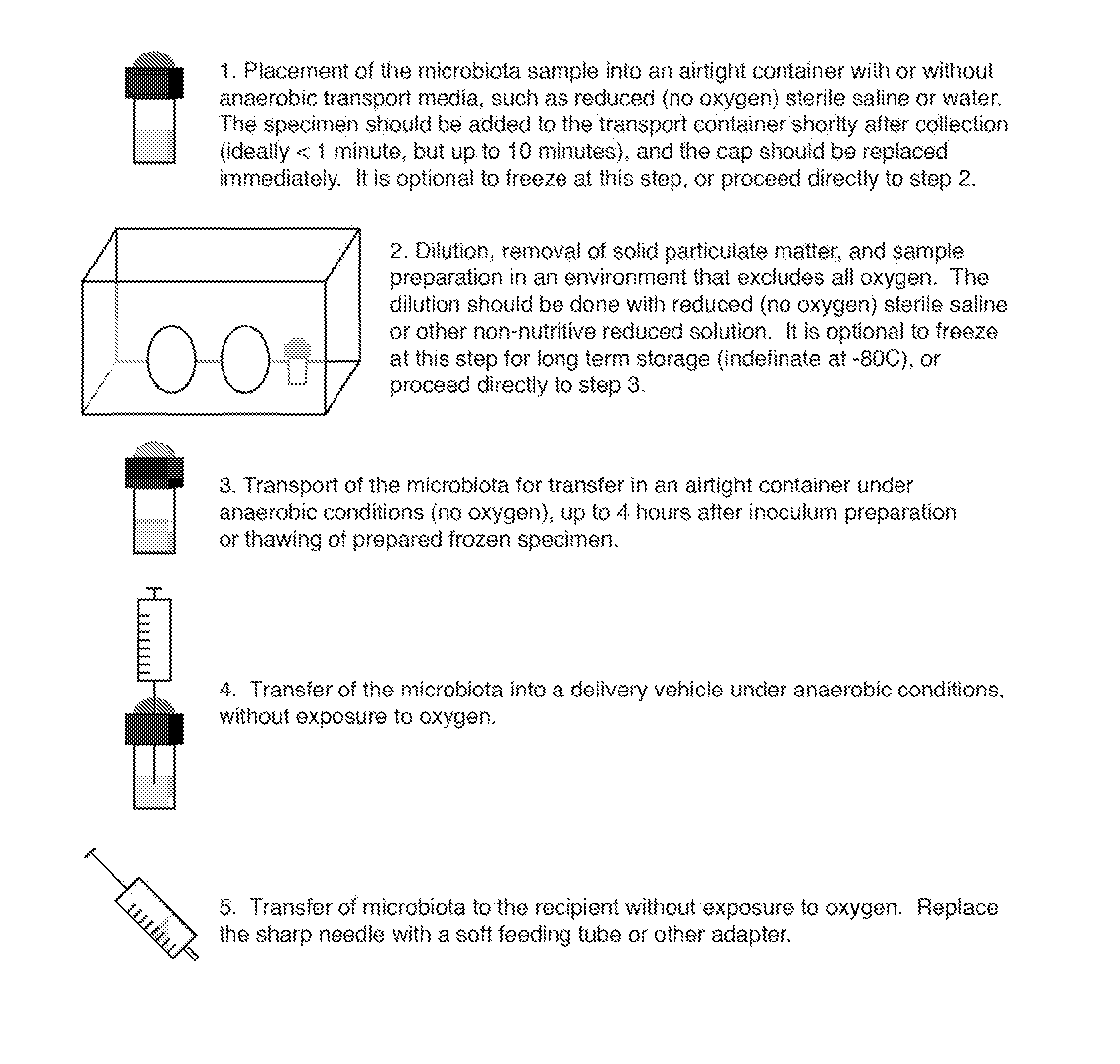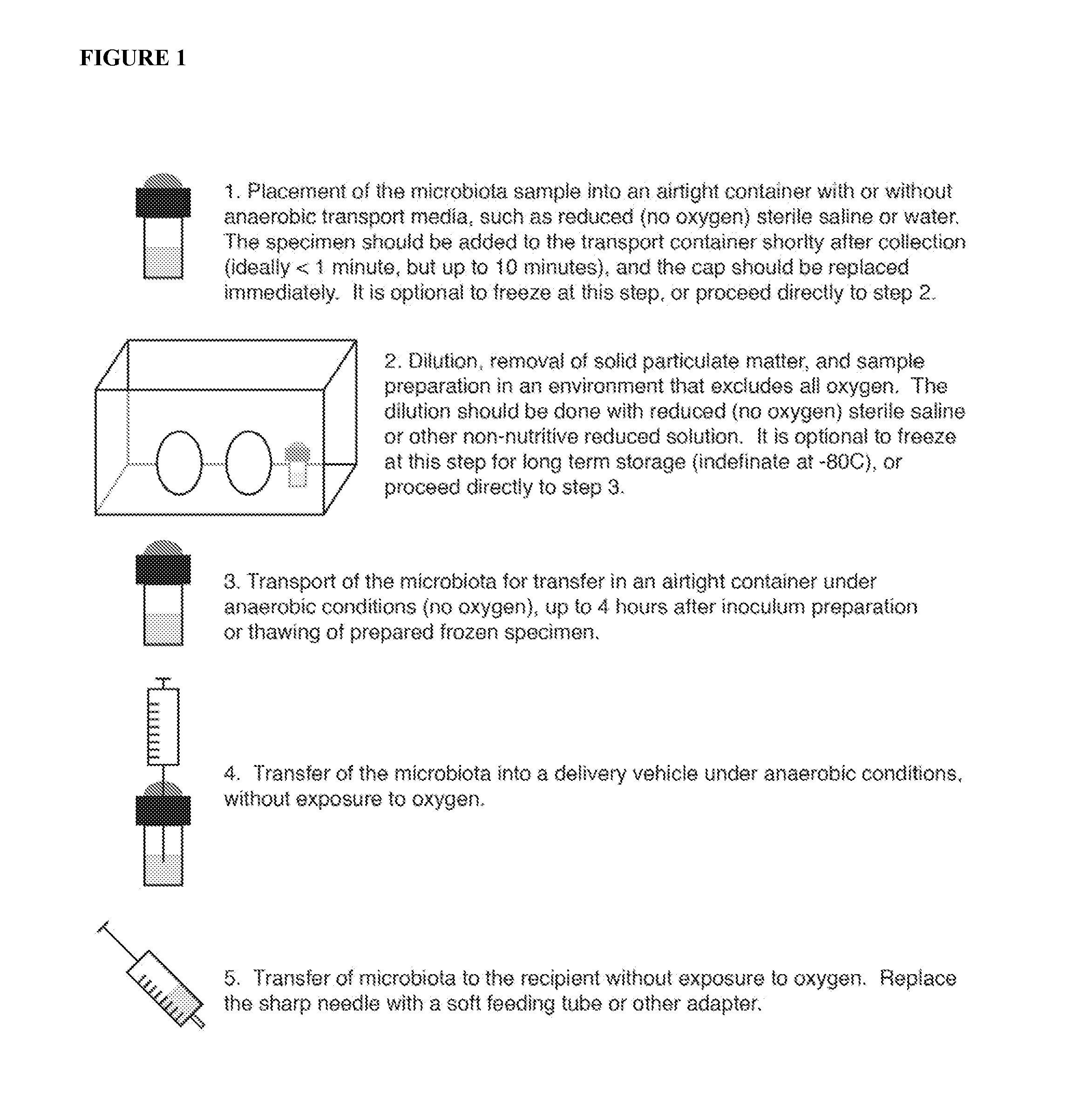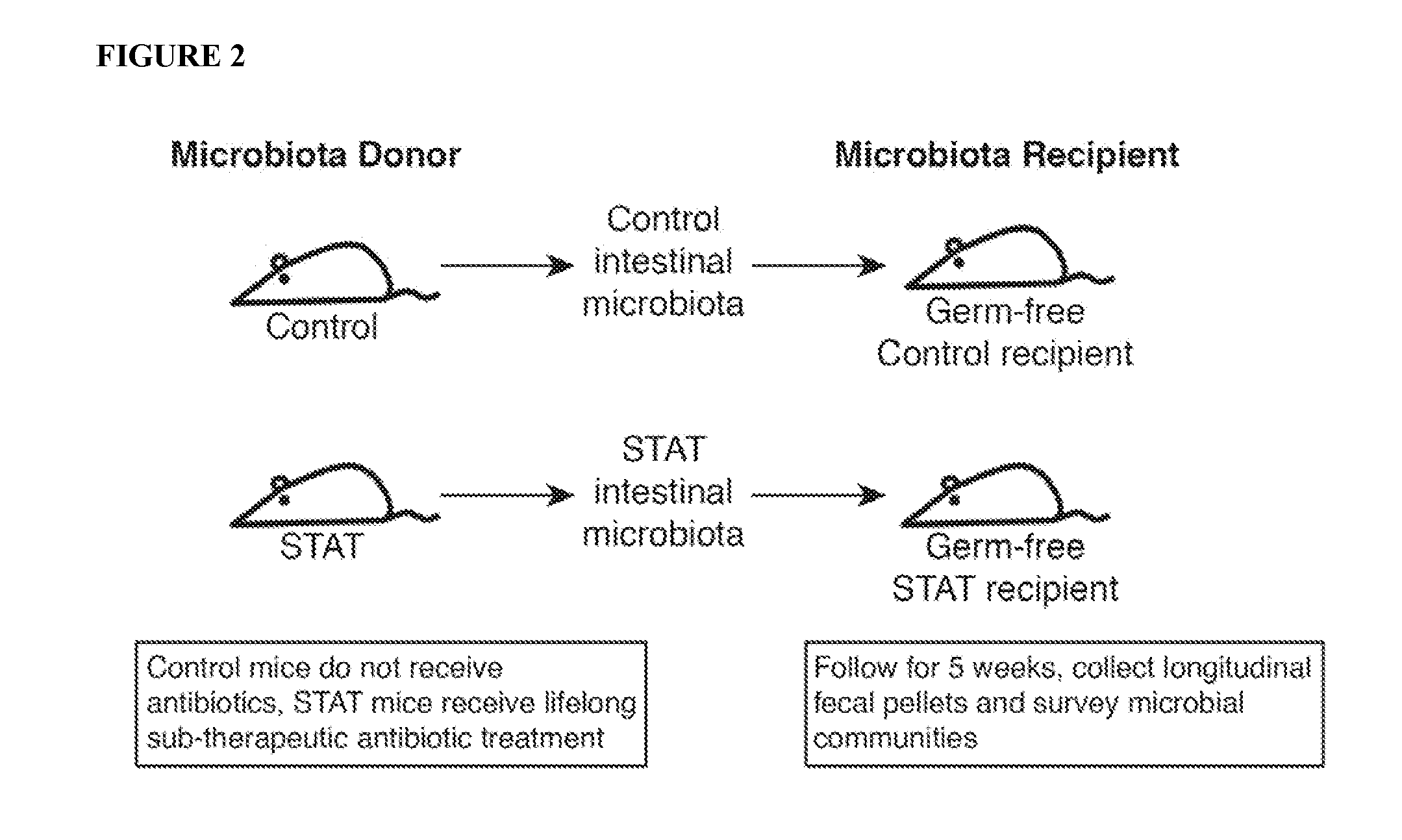Methods for efficient transfer of viable and bioactive microbiota
a microbiota and bioactive technology, applied in the field of gastrointestinal microbiota transfer, can solve the problems of limiting the diversity of microbiota within the gut, affecting the diversity of microbiota transplants, and variable transplantation effect of microbiota
- Summary
- Abstract
- Description
- Claims
- Application Information
AI Technical Summary
Benefits of technology
Problems solved by technology
Method used
Image
Examples
example 1
Transmission of Normal or Manipulated Microbiota with High Efficiency and Viability of the Microbiota
[0073]C57BL / 6J (Jackson Labs, Bar Harbor Me.) mice either received no antibiotics (control) or continuous subtherapeutic antibiotic treatment (STAT) with penicillin in their drinking water. Mice were weaned at 4 weeks onto normal chow (13.2% fat, 5053 PicoLab Rodent Diet 20, LabDiet, Brentwood, Mo.) then changed to a high fat diet (45% kcal from fat, D12451, Research Diets, New Brunswick, N.J.) at 6 weeks of life. At 18 weeks of age, the three animals with weight at or closest to the median were selected as cecal content donors from each group (Control, n=7; STAT, n=8). Donor mice were humanely euthanized, and the proximal ⅓ of the cecum was aseptically removed and immediately (less than 1 minute) placed in reduced (no oxygen), sterile liquid dental transport media (Anaerobe Systems, Morgan Hill Calif.). The cecal samples in anaerobic transport media were brought into an anaerobic ch...
example 2
Transtat: Transmission of Altered Metabolic Phenotype Through Microbiota Transfer
[0076]The present inventors found strong associations between the receipt of sub-therapeutic antibiotic treatment (STAT) (penicillin) and changes in body composition in comparison to the mice that received Control drinking water. These observations suggest that the antibiotic exposure led to the changes in body composition, since it was the only variable in the experiment. However, to develop practical approaches to the causation of obesity, it is important to determine whether the antibiotics are working directly on the tissues or whether the effect of the antibiotic is mediated through its effects on microbiome composition. Therefore, the present inventors undertook an experiment to harvest microbiota from the STAT-exposed mice and the Control mice, and transfer them into germ-free mice. These mice now were conventionalized (i.e., they now were colonized by a microbiota), and the present inventors sou...
PUM
 Login to View More
Login to View More Abstract
Description
Claims
Application Information
 Login to View More
Login to View More - R&D
- Intellectual Property
- Life Sciences
- Materials
- Tech Scout
- Unparalleled Data Quality
- Higher Quality Content
- 60% Fewer Hallucinations
Browse by: Latest US Patents, China's latest patents, Technical Efficacy Thesaurus, Application Domain, Technology Topic, Popular Technical Reports.
© 2025 PatSnap. All rights reserved.Legal|Privacy policy|Modern Slavery Act Transparency Statement|Sitemap|About US| Contact US: help@patsnap.com



